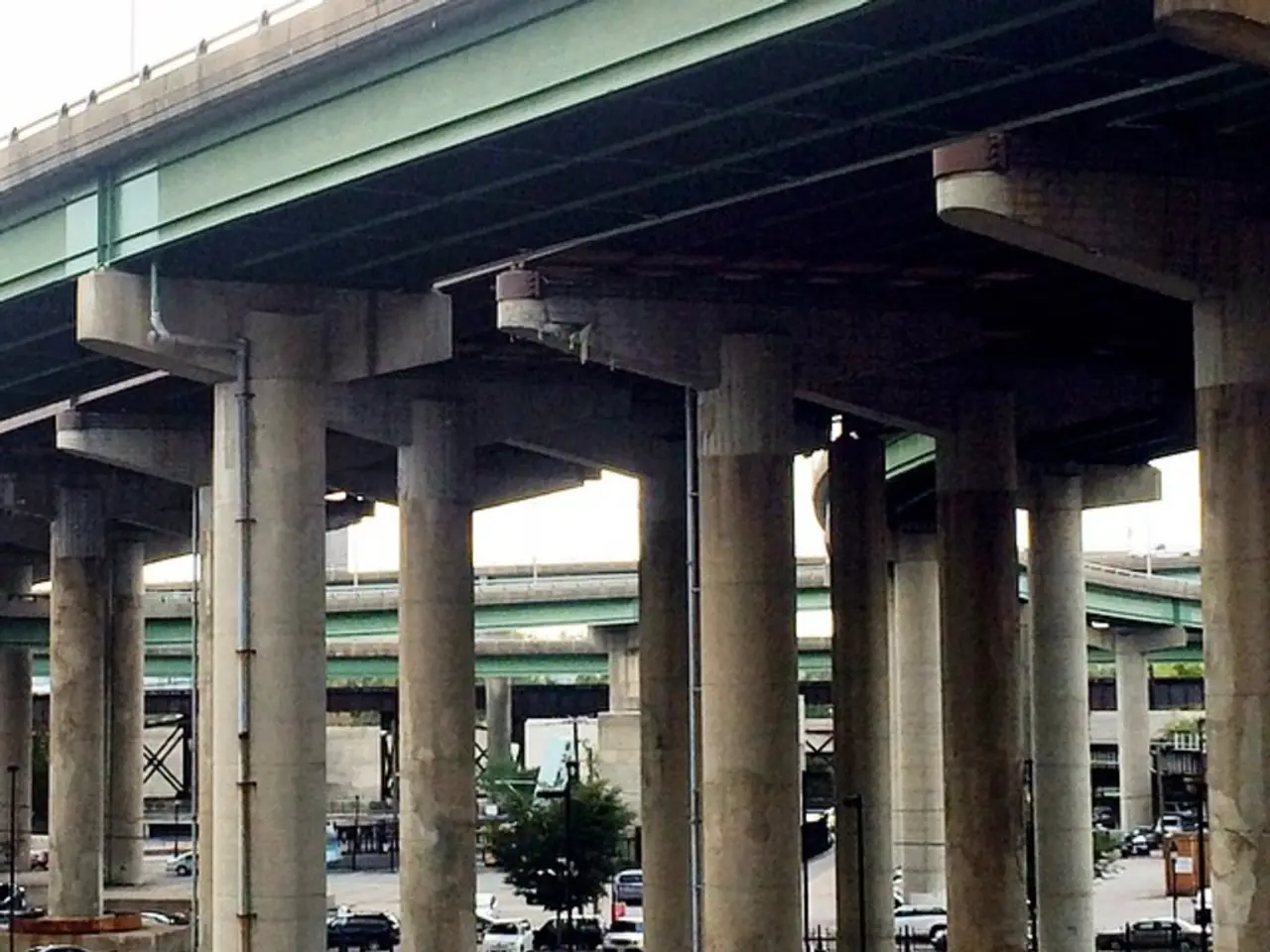New York City's forthcoming 40-mile Greenway expansion enhances the possibility for a lengthy stroll around Manhattan.
New York City is set to transform its urban landscape with the Greater Greenways plan, a visionary initiative that aims to add 40 new miles of car-free pedestrian and bike paths across the five boroughs [1][2][3]. The plan, which is the city’s first master plan for greenways in over 30 years, could potentially become one of NYC’s most iconic features if it succeeds [3].
Construction on some projects could start as early as 2028, but a full timeline and budget have not been set yet [1][2][3]. Regarding funding, a recent announcement confirmed a $47.6 million allocation for NYC Parks and DOT to connect greenways across Brooklyn, part of a broader investment to support expansion and maintenance [3]. Additionally, a separate federal transportation grant of $7.25 million has been identified to support initial planning and expansion efforts [4].
The plan targets closing gaps in the existing 500+ miles of fragmented greenway network. It prioritizes six main corridor expansions, including the waterfront routes in Brooklyn, Queens, Manhattan, the Bronx, and Staten Island [1][3]. For instance, the Queens Waterfront links Long Island City, Astoria, East Elmhurst, and College Point, while the Brooklyn Waterfront Greenway connects over 20 neighborhoods from Greenpoint to Sheepshead Bay [1][3].
The impact on the city’s transportation and environment could be significant. The plan would provide safer, car-free routes for walking and cycling, encouraging active transportation and reducing vehicular congestion and emissions [1][3]. Greenways increase access to parks and waterfronts, enhancing quality of life and promoting public health [1][3]. By improving connectivity to job centers and commercial areas, they support economic growth [1][3].
The plan also emphasizes equity and climate resilience, aiming to ensure all neighborhoods have access to green spaces and safer outdoor transportation options [1][3]. Greenways make the city more climate-resilient, protecting communities from flooding and extreme heat [1][3]. They also boost local economies by directing people to parks, shops, and waterfront attractions [1][3].
If fully realized, New Yorkers from Staten Island to the Bronx could enjoy a seamless network of paths, making the city more connected and greener. Transportation Alternatives' Ben Furnas believes that if the Greater Greenways plan is executed correctly, future New Yorkers will wonder how they ever lived without it [1][3].
The Greater Greenways plan includes over 100 projects, some of which are already underway [1][3]. However, the key to the plan's success lies in securing full funding and phased construction over the coming years. Official updates and detailed timelines are expected to be released progressively as projects advance toward the 2028 start date [1][2][4].
[1] NYC.gov - Greater Greenways Plan [2] NYC Mayor's Office - Press Release [3] NYC DOT - Greater Greenways Plan Factsheet [4] Federal Highway Administration - Grant Award Announcement
- With the Greater Greenways plan, New Yorkers might find themselves contemplating a car-free lifestyle while enjoying the city's expanded pedestrian and bike paths, possibly pondering the latest fashion-and-beauty trends along the way.
- As the Greater Greenways plan progresses, it’s not hard to imagine residents taking their pets for a stroll along the new waterfront routes in Brooklyn, Queens, Manhattan, the Bronx, and Staten Island, allowing for more quality time with their furry companions.
- The enhanced connectivity provided by the Greater Greenways plan could open up new opportunities for food-and-drink experiences, with local eateries in commercial areas along greenway corridors attracting curious travelers seeking unique culinary delights.
- As New York City becomes more connected and green, homeowners may find themselves enjoying a garden walk in the newly renovated green spaces or taking a refreshing dip in the nearby waterfronts, improving their overall well-being and relationships with nature.
- With a seamless network of paths and increased access to green spaces, the Greater Greenways plan paves the way for an environmentally friendly and economically prosperous future for both current and future generations, making shopping for eco-friendly products a popular choice for savvy residents.




